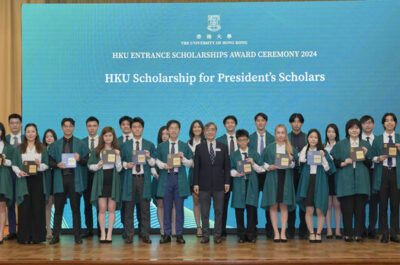…
Asia remains a primary focus for SAS Scandinavian Airlines as the airline enjoys some of its strongest growth over the summer. According to Hakan Ollson, SAS General Manager for Southeast Asia, SAS routes reached on average 80% load factor during the summer season and the winter season looks already very promising. “ The winter season is Asia’s peak period as most Scandinavians will head for a beach holiday to Thailand and other destinations in Southeast Asia,” says Ollson. Scandinavia is indeed one of Europe’s largest source markets in Southeast Asia, representing close to a million travellers per year to the region. Thailand welcomed 760,000 Scandinavian holiday-makers in 2007, Malaysia 113,617, Vietnam 62,000 and Indonesia around 60,000.
The airline is boosting its winter schedule by reinstating its route from Stockholm to Bangkok with three weekly frequencies, offering additional connections from and to the rest of Europe. “Compared to the summer, our capacity to Bangkok is growing by 25% from 6 to 8 weekly frequencies with a total of 4,240 seats compared to 3,180 seats in August. We also launch a new frequency to India with Delhi being served three times a week from Copenhagen”, adds Ollson. Other SAS destinations in Asia are Beijing (Ten times weekly from both Copenhagen and Stockholm) as well as six weekly flights on the Copenhagen-Tokyo route.
SAS wants also to attract more Asians to fly on its routes and has launched a marketing campaign based on three themes: Scandinavian spirit, the environment and the high tech oriented airline. “We want to offer the best service for our passengers and make heavy use of the latest technological innovation to improve our customers’ experience”, highlights Ollson. Among others, SAS offers check-in and booking on the web and through mobile phones. Passengers can also select their seat and check their luggage and print their boarding pass from their own computer. Environment is a major concern for SAS which has been looking for ways to cut fuel consumption for over a decade. Green landings in Stockholm, Goteborg and in the near future in Norway, helps the airline to save up to 150 kg of fuel and 450 kg of CO² per flight. “We are also studying of green landings in Asia and might have some important communication before the end of the year,” adds Ollson. SAS is committed to reduce its consumption by 6%to 7% by 2011. And finally, SAS will boost tourism to Scandinavia as it remains the region’s largest carrier with over 40 destinations in its network.
In parallel to SAS, competitor Finnair is also mounting its presence in Asia. The airline flies non-stop to 11 destinations with the recent addition of Seoul. The airline will however adapt its winter program. Thailand will get a major boost with a second daily flight added over the winter to Bangkok with a total of 3,666 seats per week compared to 1,975 seats this summer. Change to a late evening departure time from Helsinki for the second daily flight will help to expand the number of connections to Europe to 40 cities. Connections to Australia via Bangkok will also improve thanks to the change.The airline will also fly non-stop twice a week to Phuket out of Helsinki.
In China, Finnair will terminate its flights to Guangzhou bt increase its presence in Hong Kong with a daily flight. It will also reduce the number of its frequencies to India, Japan and Korea. In total, the capacity to Asia will be slightly down, by approximately 5%. However, the airline already announced to expand strongly to India next summer by offering a daily flight to Mumbai and by looking at additional cities. As the airline expects to transport over 1.3 million passengers on its Europe-Asia routes, Helsinki airport is catering for this source of traffic by upgrading its capacity. An additional 39,000 m² expansion for non-Schengen passengers will open by the autumn of 2009 for long haul flights. It will offer a new lounge for premium passengers as well as a spa and wellness centre for its passengers in transit.
Table: AirAsia Group capacity between Kuala Lumpur and Indonesia (Nov. 2008)
|
Airline |
Destination |
Number of |
Number of |
|
AK |
Bandah Aceh |
7 |
1,043 |
|
QZ |
Bandung |
14 |
1,862 |
|
AK |
Batam |
4 |
596 |
|
AK |
Denpasar |
14 |
2,086 |
|
QZ |
Denpasar |
7 |
931 |
|
AK |
Jakarta-CGK |
21 |
3,129 |
|
QZ |
Jakarta CGK |
21 |
2,793 |
|
AK |
Makassar |
7 |
1,260 |
|
AK |
Manado |
3 |
540 |
|
AK |
Medan |
14 |
2,086 |
|
QZ |
Medan |
7 |
931 |
|
AK |
Padang |
7 |
1,043 |
|
AK |
Palembang |
4 |
596 |
|
QZ |
Pekanbaru |
4 |
532 |
|
AK |
Solo |
14 |
2,086 |
|
AK |
Surabaya |
14 |
2,086 |
|
QZ |
Surabaya |
14 |
1,862 |
|
AK |
Yogjakarta |
7 |
1,043 |
|
TOTAL |
|
183 |
26,505 |
AK: AirAsia Bhd- QZ: Indonesia AirAsia
(Source: SRS Analyser 26/08/08- AirAsia)
Luc Citrinot a French national is a freelance journalist and consultant in tourism and air transport with over 20 years experience. Based in Paris and Bangkok, he works for various travel and air transport trade publications in Europe and Asia.




![[PR] PR_Ascott and Vimut Hospital_2024](https://www.traveldailynews.asia/wp-content/uploads/2024/04/PR-PR_Ascott-and-Vimut-Hospital_2024-400x265.jpg)


























































